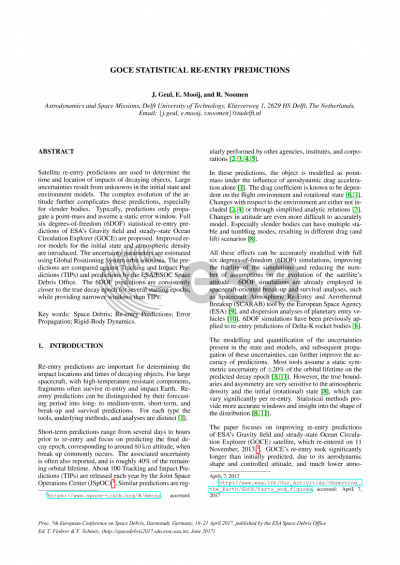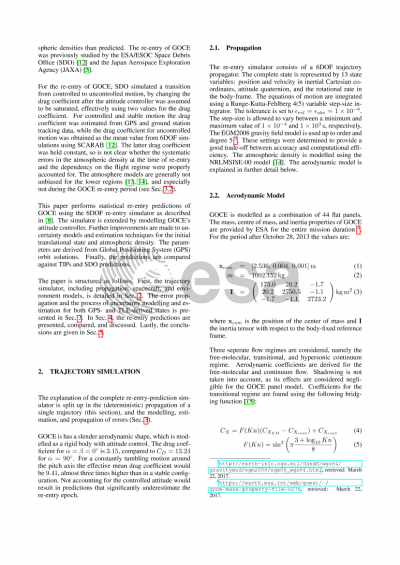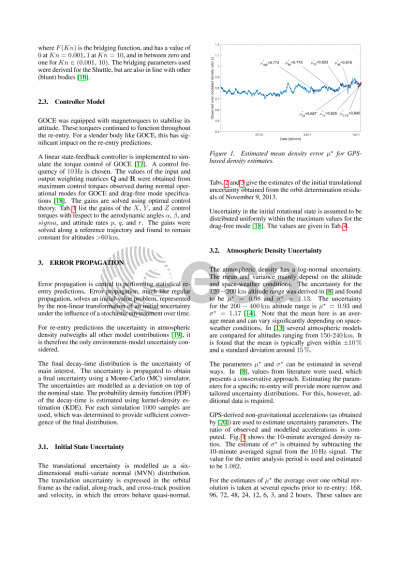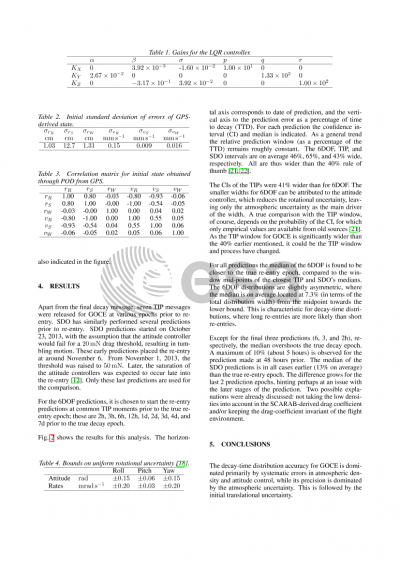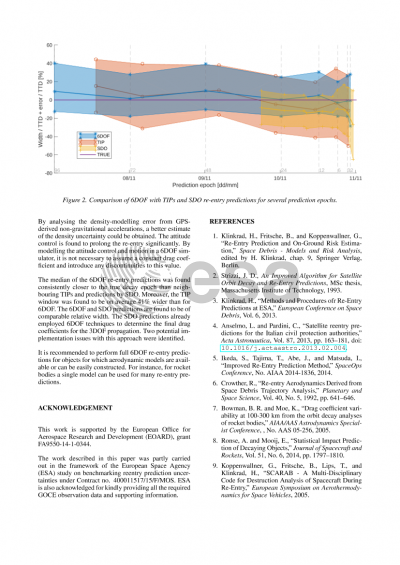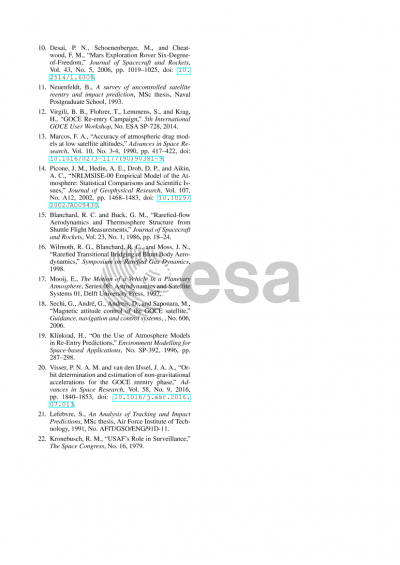Document details

Abstract
TLEs are important for many Space Situational Awareness (SSA)
studies, because of their widespread availability. For many objects
such as rocket bodies, stages, and defunct satellites TLEs present
the only source of orbital states. Despite their importance, TLEs
suffer from some major drawbacks: they are of limited accuracy
(especially compared to GPS/TIRA), are often mistagged, miss
manoeuvres, and lack covariance information. Although the TLEs are
openly available, their observations and corresponding covariance
are not. The proper understanding and subsequent modeling and
estimation of these uncertainties is paramount for previously
mentioned SSA activities.
The aim of the paper is to present uncertainty models and estimation
techniques, focusing on improving re-entry predictions using TLEs of
low-earth orbit (LEO) satellites. Only the uncertainties in the
initial translational state and deficiencies in atmospheric density
and spacecraft aerodynamic modeling are considered. GOCE, during
its re-entry phase, is used as the reference object for this study.
Probability distributions are presented for modeling uncertainties
in the translational and rotational state, and atmospheric
density. A new robust weighted differencing method for estimating
the uncertainty of TLEs is introduced. For GOCE during the period of
investigation, two types of TLEs are present, namely of the classic
and enhanced type. The latter TLEs are obtained from pseudo
observations derived from a numerical higher-order fit and
propagation. The proposed method is validated using GPS orbit
solutions. Moreover, the estimation of the ballistic coefficient
through retrofitting is discussed and executed for both TLE
types. The obtained estimates of the uncertainty in the initial
translational state and atmospheric density are applied to re-entry
time predictions of GOCE. Specifically, decay time distributions are
obtained using six degree-of-freedom statistical re-entry
simulations. The effects of the different environment and spacecraft
models is investigated, especially the proper modeling of the
attitude control that was present almost entirely throughout
re-entry. Moreover, GPS and TLE-derived translational-state inputs
are compared. The developed methods and findings are then applied to
re-entry predictions of several Delta-K rocket bodies.
Enhanced TLEs are shown to have a reduced uncertainty and improved
forward propagation stability compared to the older classic type. In
fact, enhanced TLEs states are found to be most accurate after their
associated epoch, due to the inclusion of propagated pseudo
measurements. The ballistic coefficient of enhanced TLEs is found to
differ from classic TLEs and is shown to be consistent with retrofit
estimates of the ballistic coefficient. This suggests that the
coefficient is obtained directly from the numerical fitting process,
rather than co-estimated with the mean elements of the TLE
themselves, as is the case for classic TLEs. This finding positively
affects re-entry predictions. The attitude control and atmospheric
density bias are the two major factors on the mean decay
epoch. While the atmospheric density uncertainty is by far the most
important factor in the decay-time uncertainty. The uncertainty in
initial state is shown to have only minor influence on the final
decay-time distributions, despite GPS being up to four orders of
magnitude more accurate than TLEs. This illustrates the importance
of improving atmospheric density modeling for re-entry predictions.
Preview
